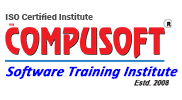- Home
- About Us
- Our Courses
- CAD Courses
- Coding Courses
- AngularJS Training
- Back End Development
- Bootstrap Training
- C Programming Training
- C++ Programming Training
- Core Java Programming Training
- jQuery Training
- JavaScript Training
- HTML Training
- Full Stack Development – PHP
- Front-End Development
- Data Structures Using C/C++
- CSS Training
- Laravel Training
- Mobile Application Development Training
- PHP-MySQL Training
- Python Programming (Core / Advance)
- SQL(Structured Query Language)
- Web Design Training
- Web Design & Development Training
- WordPress Training
- Graphic Designing Courses
- Skill Development Courses
- Digital Marketing Course
- Students Corner
Shopping cart
- +91 74900 08464
- Mon - Fri: 09:00 AM - 08:00 PM
